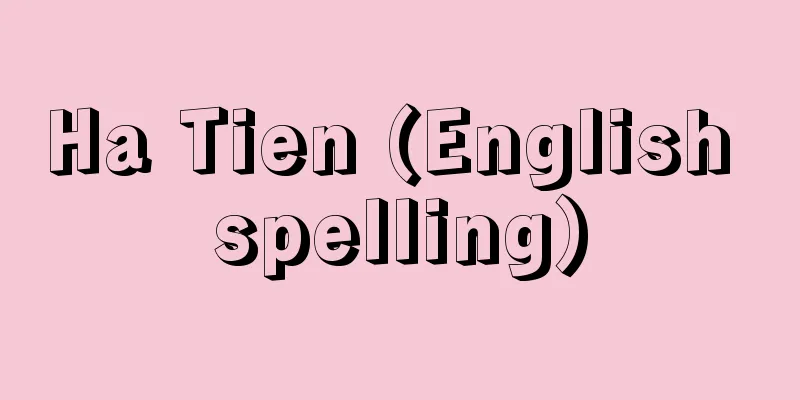Educational system - student

|
This law established Japan's first modern school system and was promulgated nationwide on August 3, 1872 (Meiji 5). It was drafted by the Educational System Investigation Office, which was mainly made up of Western scholars, including the Buddhist scholar Mitsukuri Rinsho, who was appointed in December 1871, and took European and American educational systems into consideration, and was submitted to the Dajokan in March 1872. However, publication was delayed due to issues with the costs of implementing the educational system. The philosophy of the educational system is clear in the Dajokan's Educational System Proclamation, "Osei dasaresho," dated August 2, 1872. The school system rejected the idea of Confucian education for rulers in the feudal era, and based on the principle of equality for all classes, with the ambition of "hoping that there will be no uneducated households in the villages and no uneducated people in the homes," and based its educational principles on individualism and practical learning, and stated that "people should be able to establish themselves, control their property, and prosper in their businesses, and thus live out their lives." In other words, the purpose of school education was to provide practical education that would cultivate the ability of all citizens to be independent and self-sufficient. However, the contents of the subjects were mostly translations from Europe and the United States. The contents of the school system first clarified the principle of national management of education, stating that "the educational administration of the entire country shall be unified by the Ministry of Education," and then contained 109 provisions at the time of its promulgation, including school districts, schools, teachers, students, overseas students, and educational administration. School management was based on the principle of tuition fees and the burden of school district residents, which was a distinctive feature of the financial system. The nation was divided into 8 university districts, 32 middle school districts within each university district, and 210 primary school districts within each middle school district. It was planned to establish 8 universities, 256 middle schools, and 53,760 elementary schools nationwide. Education administration was independent from general administration, with supervisory bureaus in university districts and 12-13 school district supervisors in middle school districts, each responsible for several elementary school districts and handling school enrollment, school establishment, and financial management. School districts were also administrative units. There were lower and upper elementary schools (4 years each), lower and upper middle schools (3 years each), and universities (no set period). In addition, normal schools were added, and later vocational schools and foreign language schools were added. In addition to regular schools, elementary schools included girls' schools, village schools, poor people's schools, and private elementary schools, and in addition to regular middle schools, there were also industrial schools, commercial schools, and public schools (part-time). The implementation of the school system was carried out with the goal of spreading elementary schools, making school attendance compulsory, and improving teacher training, and it achieved some success, but the cost of establishing and maintaining elementary schools was too much for the economic capabilities of the people at the time, and it put a strain on town and village finances. In addition, the content of the lessons used textbooks imitating those of Europe and the United States did not match the realities of people's lives, and there were few teachers who could teach new subjects, so school education became extremely formal, which caused resentment among the people. The Ministry of Education also reflected on this educational situation and investigated the actual situation. Based on the investigation, the implementation of the school system was discontinued around 1877, and in 1879 it was switched to the Education Order, which placed emphasis on matching elementary school education with the realities of people's lives. [Yoshihiko Motoyama] "Inoue Hisao, 'A Study of the Educational System' (1963, Kazama Shobo)" ▽ "Kurazawa Tsuyoshi, 'A Study of the Educational System' (1973, Kodansha)" ▽ "Ogata Hiroyasu, 'A Study of the Implementation Process of the Educational System' (1963, Azekura Shobo)" [Reference] |Source: Shogakukan Encyclopedia Nipponica About Encyclopedia Nipponica Information | Legend |
|
1872年(明治5)8月3日全国に公布した日本最初の近代的学校制度を定めた法規。71年12月に任命された仏学者箕作麟祥(みつくりりんしょう)ら、主として洋学者よりなる学制取調掛により、欧米の学制を参考に起草され、72年3月太政官(だじょうかん)に上申される。しかし、学制実施経費の問題で公布は遅れた。学制の理念は72年8月2日の太政官布告学制「被仰出書(おおせいだされしょ)」に明らかである。学制は、封建時代の儒教的為政者教育の理念を否定、四民平等の原則にたち「邑(むら)に不学の戸なく家に不学の人なからしめんことを期す」という抱負をもって、個人主義、実学主義を教育の原理とし、「人々自ら其(その)身を立て其産を治め其業を昌(さかん)にして以(もっ)て其生を遂(とぐ)る」こと、いいかえれば、全国民に自立自営の能力を養う実学教育を学校教育の目的だとする。しかし、教科の内容は欧米の翻訳が多かった。学制の内容は、まず「全国ノ学政ハ之(これ)ヲ文部一省ニ統(す)フ」と教育の国家管理の原則を明確にし、ついで学区、学校、教員、生徒、海外留学生、教育行政など、発布当時109章の規定よりなり、学校経営は授業料と学区住民の負担を原則とするところに、財政の特色があった。 学区は全国を8大学区、1大学区を32中学区、1中学区を210小学区に区分。全国に8大学、256中学、5万3760小学校の設立が予定されていた。教育行政は一般行政から独立し、大学区に督学局、中学区に学区取締12~13名を置き、各人が数小学区を分担して、就学、学校設立、経費運営の事務にあたる。学区は行政単位でもあった。学校は下等、上等小学校(各4年)、下等、上等中学校(各3年)、大学(年限無規定)。そのほか師範学校、のちに専門学校、外国語学校などが加わる。小学校は正規の学校以外に女児小学、村落小学、貧人小学、小学私塾をその範囲に数え、中学校も正規の中学校以外に工業学校、商業学校、諸民学校(定時制)などを含む。学制の実施は、小学校の普及と就学強制、教員養成の充実を目標に進められ、一定の成果をあげたが、小学校の設立、維持経営費用は当時の民衆の経済能力には負担過重で、かつ町村財政を圧迫したほか、授業内容が欧米模倣の教科書を用いた結果、民衆の生活現実と一致せず、また新教科を教えうる教員も少なく学校教育は著しく形式化して民衆の反感を買った。文部省もこのような教育事情を反省し、実情を調査。その調査に基づき1877年ごろには学制の実施を中止、79年から民衆の生活現実と小学校教育との一致を重視する教育令に切り換えた。 [本山幸彦] 『井上久雄著『学制論考』(1963・風間書房)』▽『倉沢剛著『学制の研究』(1973・講談社)』▽『尾形裕康著『学制実施経緯の研究』(1963・校倉書房)』 [参照項目] |出典 小学館 日本大百科全書(ニッポニカ)日本大百科全書(ニッポニカ)について 情報 | 凡例 |
<<: Educational politics - student
>>: Nuclear spin - Electron spin (English spelling)
Recommend
Islamic Philosophy
It was also called "Arabic philosophy."...
American
…He copied the newspaper methods pioneered by Pul...
Phenomena
…Shadow puppet theaters were also all the rage in...
Reversal - haki (English spelling)
When a court in a retrospective review finds that ...
Narvaes, P.de (English spelling) NarvaesPde
…The legend of the Fountain of Youth, which dates...
shovel
〘noun〙 (shovel)⸨Shovel⸩ A metal tool for scooping ...
Photoelectric element - opto-electronic element
An element that combines the behavior of light an...
False hallucination
... Patients' belief in their hallucinations ...
Eagle, H.
…This demonstrated that animal cells have the abi...
Fundamental Law of the Kingdom (English)
This refers to the set of customary regulations th...
Substitute
This is a classic Rakugo piece. It is also called ...
Kansai Shokonsha - Kansai Shokonsha
...In 1879, the Tokyo Shokonsha became a special ...
Nishijin ware - Nishijin ware
A great fire in Rakuchū (Kyoto city) in 1730. It s...
Sima Guang - Shibako
A bureaucrat and politician who played an active ...
Rubber plate - rubber plate
A printing plate made from natural or synthetic ru...









